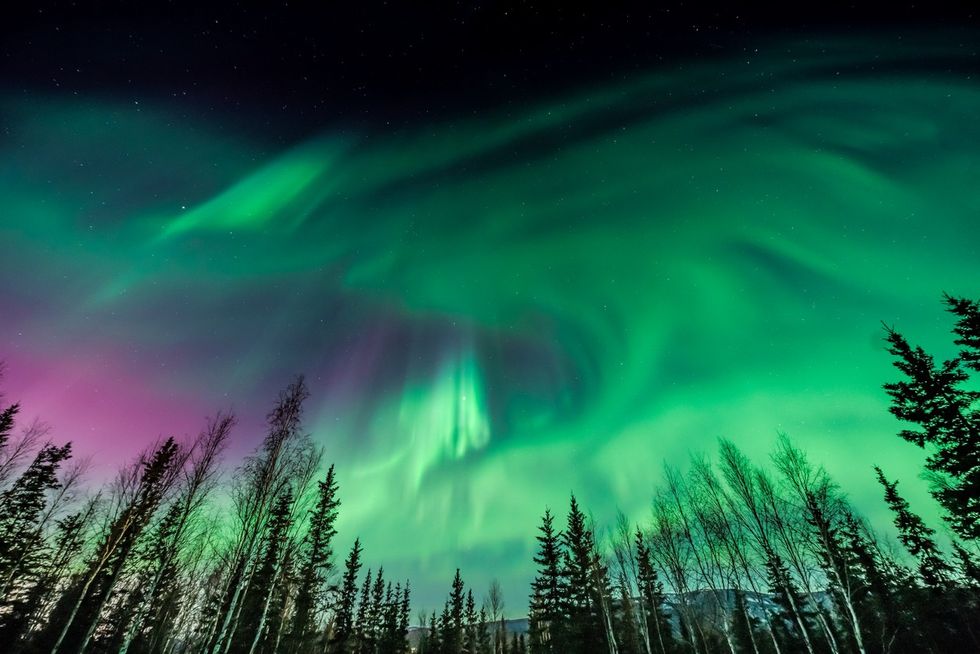If you feel like you keep seeing more and more reports of Northern Lights sightings in the U.S., you’re not imagining things. In fact, scientists predict that it will become an even more common occurrence. This is because Earth is in the midst of a full solar cycle, “an approximately 11-year cycle of solar activity” explains Space.com. During these cycles, the sun’s magnetic poles flip, leading to geomagnetic storms during which “energetic particles from the sun slam into and interact with Earth’s upper atmosphere,” creating colorful light shows in the sky.
And now, the National Oceanic and Atmospheric Administration (NOAA) has issued a “severe” geomagnetic storm watch for today, Oct. 10, and Friday, Oct. 11, which is likely to result in the Northern Lights, or aurora borealis, becoming visible “over much of the northern half of the country, and maybe as far south as Alabama to northern California.”
RELATED: 8 Best Places to See the Northern Lights in 2024.
In a media briefing, Shawn Dahl, service co-ordinator at NOAA’s Space Weather Prediction Center, said, “We are forecasting a severe G4 magnetic geomagnetic storm. The current anticipation is that it’s going to arrive [Thursday] morning to midday Eastern time and perhaps continue on into the following day.”
As Forbes explains, the cause of the storm is a “coronal mass ejection (CME)—a stream of charged particles from the sun—that erupted from the sun late on Oct. 8.”
The CME has been traveling at 2.5 million miles per hour, “the fastest CME we have measured in this solar cycle thus far,” said Dahl, per Forbes.
In May, a G5 (extreme) solar storm brought the Northern Lights to much of North America and Europe. It was the strongest solar storm recorded in over two decades.
As NOAA breaks down, G5 storms can bring aurora as far south as Florida and southern Texas, while G4 storms can reach Alabama and northern California. If the solar storm is downgraded to a G3 (which is possible because astronomers can’t get an exact reading until a CME is one million miles from Earth, about 15 to 30 minutes away), viewing is likely to end around Illinois and Oregon.
To stay up to date on the progress of the solar storm, you can check the NOAA’s 30-minute forecast. Dahl also suggests signing up for real-time alerts.
And to get the best viewing experience, go outside between 10 p.m. and 2 a.m. local time and find a spot farthest away from city lights, the NOAA suggests. If you can find an elevated location, even better.
“Will this be a global phenomenon or seen across the United States, such as the May storm?” Dahl said, per Space.com. “It’s tough to say until we get a good read on it. We would really need to reach those G5 levels for that to happen again, and we do have a chance for that.”

